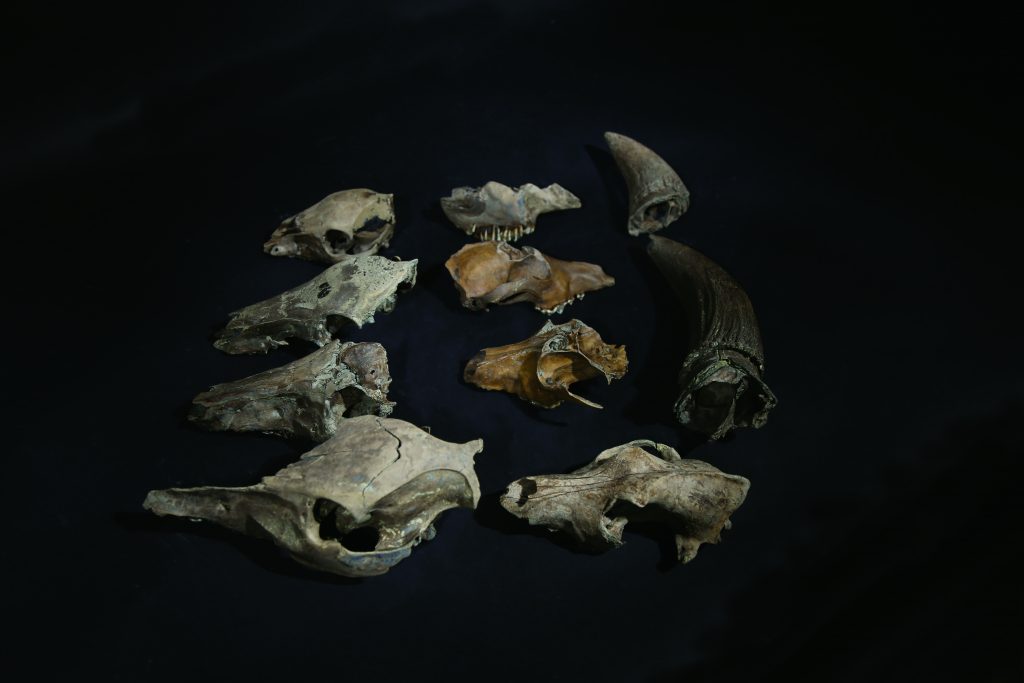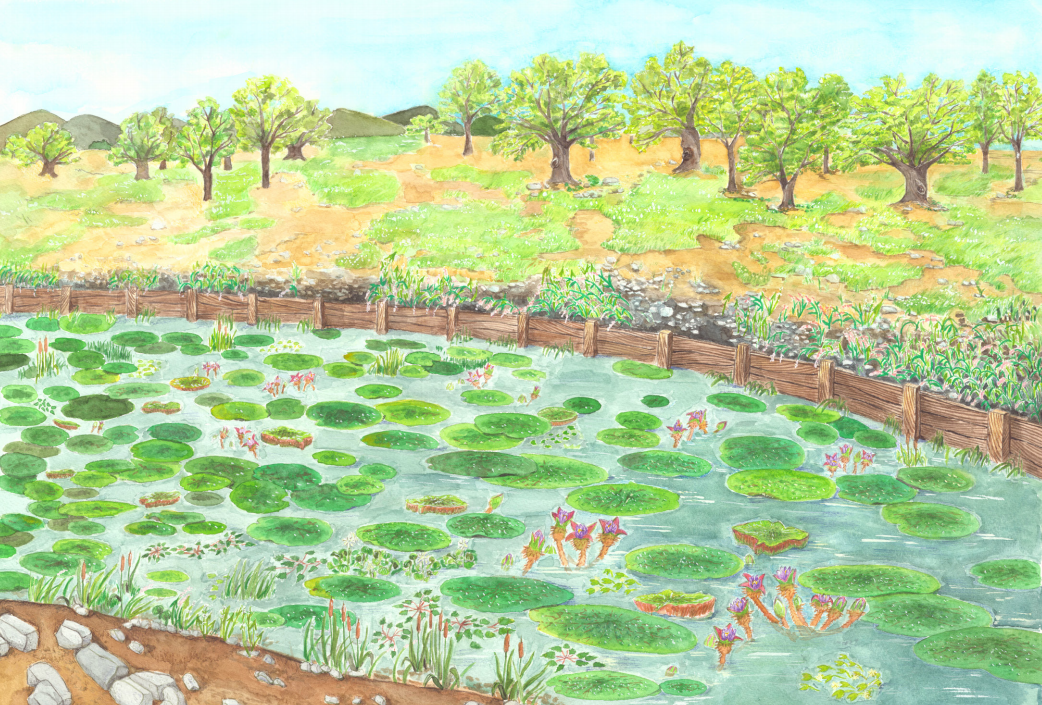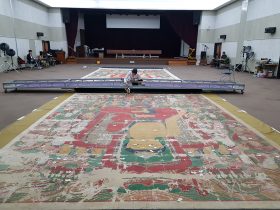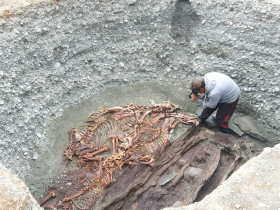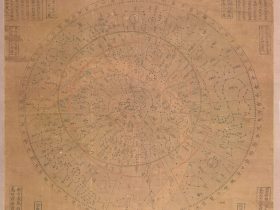Paleoecological Study on Wolseong Palace Site in Gyeongju
Gyeongju National Research Institute of Cultural Heritage
KIM Heonseok


- Wolseong Palace Site in Gyeongju and Its Paleoenvironment
The Gyeongju Historic Areas, designated as the UNESCO World Heritage Site, includes Wolseong, the ancient palace of the Silla Kingdom (57 BCE- 935 CE). The Wolseong Palace site encompasses the 1,000 year history of Silla and excavation campaigns are still underway.
One of the recent studies takes on the moat surrounding the earthen wall, giving a peek into the Silla-era palace through an interdisciplinary approach. A variety of organic matters including bones, lumber and seeds were found in the 1-meter-high silt layer of the moat, providing important materials to reconstruct the environment of the area. Investigators unearthed tiny seeds, bones and clay figurines through wet sieving of the wet silt layer of the moat to estimate the landscape of the time (Figure 1).
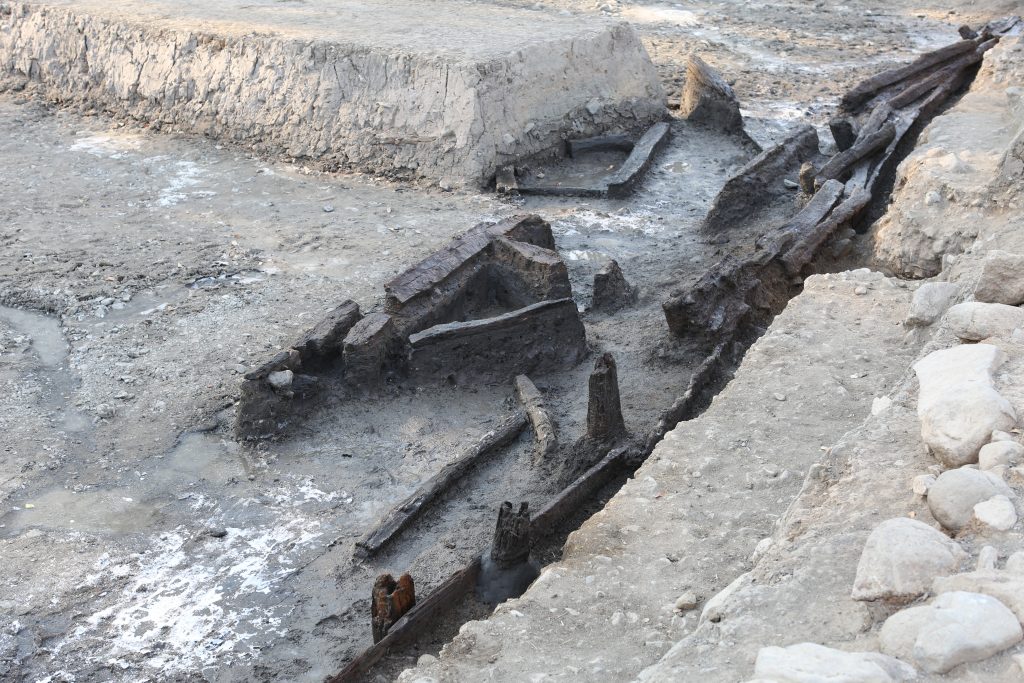

2. The First Step of Restoring Silla Palace- Investigation on the Wolseong Moat
Figure 1 shows an estimated view of summer scenery in the 5th century through the investigation on the moat surrounding the Wolseong Palace. The restoration drawing is based on the results of excavations of the moat and various artifacts retrieved through wet sieving on soils of the moat.
1) Wooden Structures of the Moat and Dating of the Wolseong Moat
The Wolseong Palace site has the Namcheon Stream on its south and a moat surrounding three remaining sides of the palace ground. Investigations on the moat have been going on since the 1980s, but it took decades to grasp the whole structure of the moat. Recent excavations revealed the wooden structure on the north side of the moat (Figure 2). A wall made of wooden planks stretches out to 80 meters and estimated to cover the whole area of the northern shore.
Radiocarbon dating and tree-ring dating were used to determine the date when the wall was created.
Tree-ring dating on some 10 pieces of wooden planks from the wall revealed that most of them are from the same period (Figure 3). Since there is no dated master chronology of the Three Kingdoms period in Korea, oxygen isotopes in tree rings were used to date the wood. The result showed that the moat’s wooden structures were installed in 433 CE. It coincides with the determined radiocarbon dates and the chronology of pottery from the site. Radiocarbon dates of other organic matters collected from the moat produced similar results, providing evidences that the moat existed at least from the 5th century. Along with the wooden structure, the most animal and plant fluids were discovered from the bottom-most soil layer of the moat.


2) Environment Estimated From Soil From the Moat
Traces of various animals and plants used during the Silla era remain in soil deposited around the 5th century. Among the flora, the most identified is the seeds of prickly water lily with over 10,000 seeds found in the moat. In addition to the aquatic plant seeds, a variety of plants were found including grains of rice, barley, wheat and bean and fruits such as peach and plum (Figure 4). These crops are expected to be used by the people of Silla, especially those lived in the palace, suggesting that they were enjoying a varied diet. These seeds are difficult to find during the excavation, but can be found through wet sieving of deposit soil in the moat.
Except for prickly water lily seeds, grains and fruits, traces of an assortment of aquatic plants that grow in or near water were found in the moat, allowing to imagine the environment around the moat during the Three Kingdoms period. In the sediments are such aquatic plants as well as pollen of various plants. The pollen analysis suggests that Zelkova (Zelkova serrata) lived near the moat and Red Pine (Pinus densiflora) and Oak (Quercus) grew in surrounding forests (Figure 5). These tree species provide a basis for identifying the vegetation land-scape of forests in Gyeongju.
If these trees grew in the forests near Gyeongju, people of the time might have used them for construction materials. The result of analysis on species of wood used for the wooden structures of the moat coincides with the pollen analysis (Figure 6).
The result of analyzing some 200 pieces used for the wooden structures shows that oak was the most commonly used by 58 percent, followed by Greeping Juniper (platycarya strobilacea) and chestnut. Using these species for construction indirectly proves that these trees grew in the forest in Gyeongju in the 5th century. Analysis on species and pollen suggest the composition of trees grew in the forest around that time.
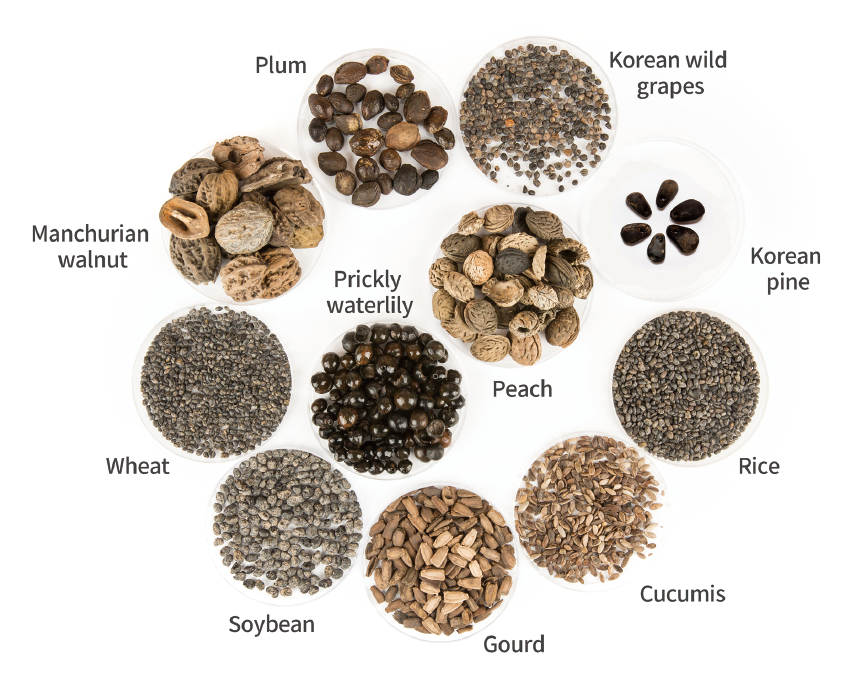

Seeds and fruits found through wet sieving of the Wolseong Moat soil
The sediments are deposited in various contexts-grew in the water of the moat and deposited there; naturally flew into from near the moat; and plant resources used by Silla people and artificially put into the moat.


Wolseong Moat (400x magnification)
Among pollens excavated from the deposit soil of the Wolseong Moat, those appear frequently are expected to compose the forest back then. Zelkova and oak trees grew in the riparian forest within the Gyeongju basin, while pine and oak trees lived in surrounding mountain forests.
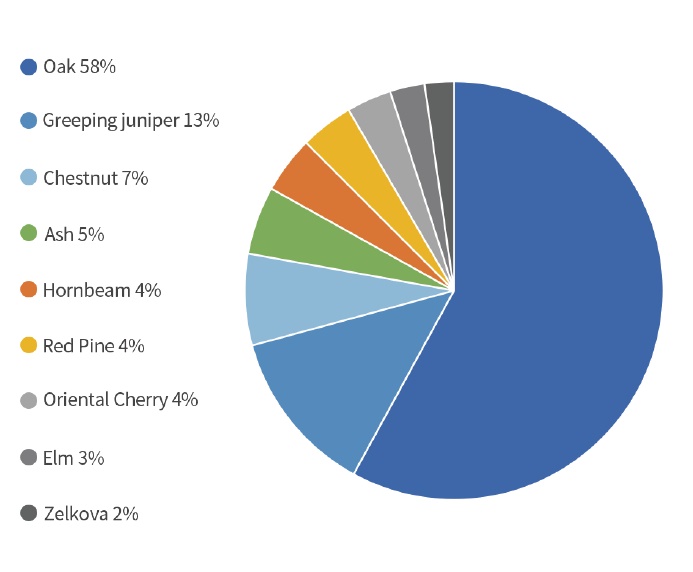

3) Silla Palace and the People of Silla in the 5th Century
Through various scientific analyses, we estimated the landscape of the Silla Kingdom in the 5th century. Currently, additional researches on animal bones and woodenware excavated from the moat (Figure 7). The silt layer of the moat includes various materials that can be used for studying the past. Researches on animal, wooden products and grains would provide more detailed looks into the life of Silla people who saw the landscape we estimated.
